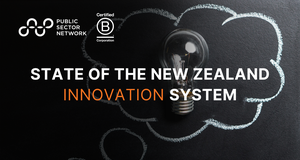There is a commonly held belief, especially in business circles, that if you are not moving forwards then it is as if you are moving backwards. In other words, innovation, creativity and continuous improvements are necessary in order to succeed. As much as this might apply to business, it certainly applies to learning and development (L&D) too. In fact, L&D are sometimes the most necessary traits when it comes to moving forwards because both learning and development are underpinned by the latest trends and the most up-to-date information.
Learning is a continuous process
If the goal of a business is to constantly move and improve, then the goal of L&D should also be a continuous process. Diane Hickman, the Director of Craft Development and Frameworks at the APS Academy of the Australian Public Service Commission (APSC), says that their academy was specifically set up to “foster a culture of continuous learning and high performance.” In fact, “the first ever Australian Public Service Learning and Development Strategy, which was released in July 2021, focuses on a broad range of learning methods our people can use to build their capability continuously.”
Shannon Pigram, the Head of Culture & Capability at ESTA in Victoria, agrees. ESTA exists to “look after the triple zero service to the Victorian community, for police, fire, ambulance and SES, on what is normally the worst day of somebody’s life. We then take information from the person calling and dispatch the required emergency response.” Dealing with life and death decisions is the core of their operation, so they have “little capacity to release people from their jobs to dedicate time to development.” Therefore, when thinking about any kind of L&D, “what is really important for us is that it is embedded into the flow of our ongoing work.”
Wellbeing as a part of L&D
Over the years there have been multiple studies by multinational organisations about what makes a good team and how to improve capacity. Matti Clements, the Director of People Development & Wellbeing at the Australian Institute of Sport (AIS), says that when Google conducted a study some time ago, they found, surprisingly, that the “majority of teams who have sustainable high performance, have five components including psychological safety, dependability, operational needs, meaning – so that individuals of the team are really personally aligned with the importance of what they’re doing – and impact.” For Google and for others, these results were unexpected because none of the five components related to the actual functions of the team, except how they related to the individual. This got the AIS thinking that “one thing that Australian sport and high performance teams around the world haven’t done well is psychological safety. And when we talk about psychological safety, what we mean is individuals of that team feeling safe to take risks and be vulnerable in front of one another.”
Changes to L&D because of the pandemic
As in many industries, the pandemic has caused changes to the practice and implementation of L&D. Diane Hickman says from the perspective of the APSC, it seems that the pandemic has “brought forward the future of work by five years. While changes were already occurring in L&D, the pandemic has certainly accelerated those changes, in particular in terms of the increased use of digital technology.” In fact, digital transformation in general and the adoption of new technologies “is going to have a big impact on L&D, which a focus on things other than face-to-face training.” Shannon Pigram says that at ESTA they use the analogy of ordering a pizza to show how much things have changed. “These days we order our pizzas on our phones, pay for our pizza using internet banking or a digital credit card, watch the pizza get delivered and the only physical interaction is when we grab it from our front door.” This is undoubtedly convenient and maybe a much simpler way of ordering, but “it’s created a really challenging environment for government organisations.”




















